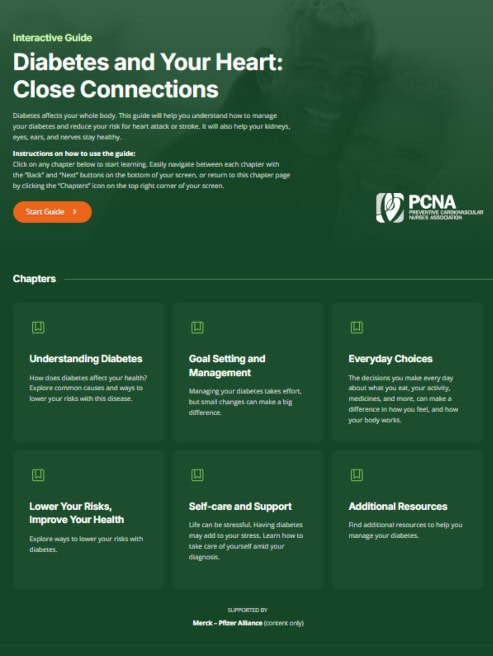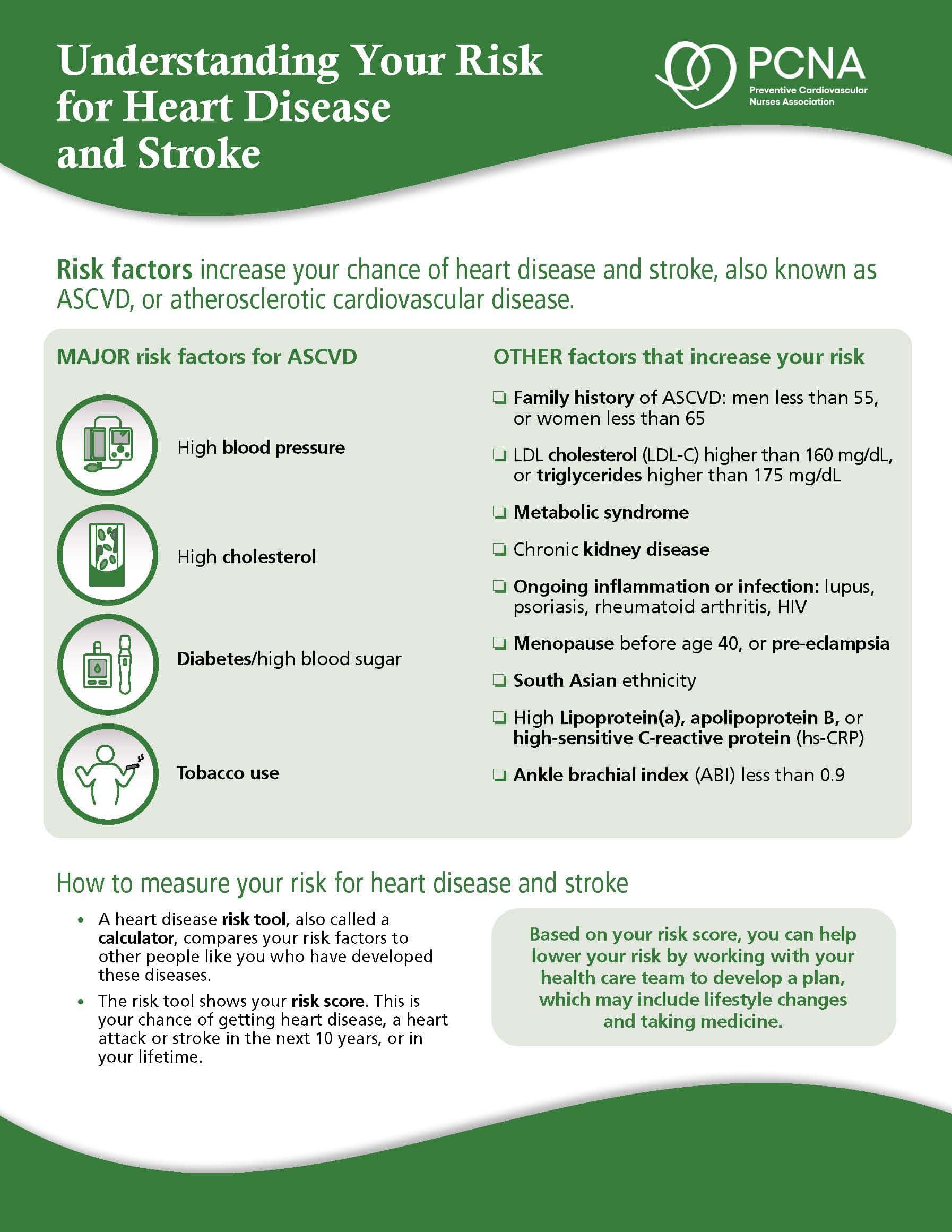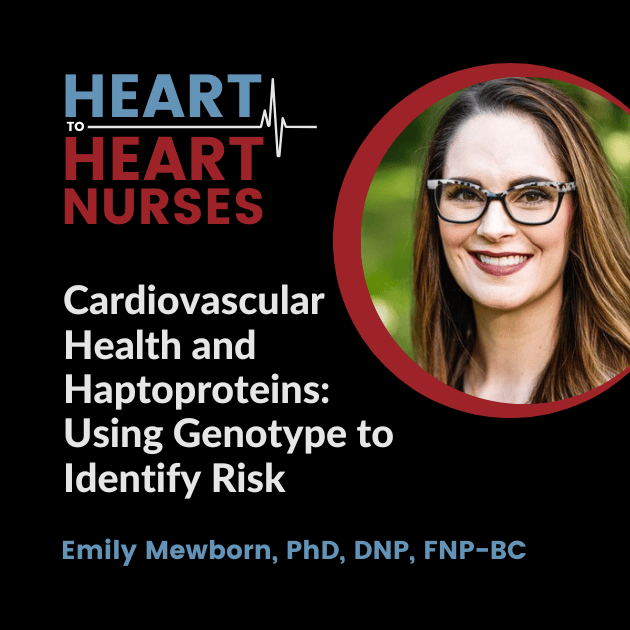You may have seen haptoglobin values in lab results–but what is it, and how is it related to cardiovascular and other diseases? Learn from guest Emily Mewborn, PhD, DNP, FNP-BC, about these links, and how our haptoglobin genotype may affect risk.
Episode Resources
Welcome to Heart to Heart Nurses, brought to you by the Preventive Cardiovascular Nurses Association. PCNA’s mission is to promote nurses as leaders in cardiovascular disease prevention and management.
Geralyn Warfield (host): (00:20) Welcome to today’s episode where we have Emily Mewborn at our table to talk a little bit about her research. But I’ll let her introduce herself to you first.
Emily Mewborn (guest): (00:31) So, my name is Emily Mewborn, and I practiced as a primary care nurse practitioner for around 10 years. During that time, I decided to go back, well, I got my DNP from the University of Tennessee Health Science Center and really wanted to be involved in research and creating new knowledge. And so, I went back and got my PhD from the same university. And now I am doing a postdoc at the wonderful University of Pittsburgh, focusing in genomics.
Geralyn Warfield (host): (01:00) And right before we came on air, you were telling me a little bit about your research. And so could you talk a little bit, especially for those of us that are unfamiliar, about what haptoglobin is, and what it does, and maybe what the literature has said about it before.
Emily Mewborn (guest): (01:15) Yes. So, haptoglobin is one of those blood proteins that you probably see in hospital blood work and you’re like, “What in the world is that? Like, who orders that?” And what it is, haptoglobin is just a protein. It’s an acute phase reactant protein produced by the liver and it is released in response to whether that’s physiologic or pathologic red blood cell lysis.
So, that could just be normal red blood cell turnover every 180 days. That could be from a hemorrhage, from trauma, from infection, anything where there is extra red blood cells busting up, essentially.
Haptoglobin is the protein that goes in kind of like a Pac-Man. That’s what I think of it. It’s like Pac-Man goes and it chomps up and it binds to that free hemoglobin. It binds it and it excretes it.
The reason that that’s important is because free hemoglobin creates oxidative stress. And oxidative stress, as a lot of us are familiar with, creates inflammation. It’s associated with higher risk of tons of diseases: cancers, heart disease, dementia, all sorts of things. So, you want as little oxidative stress as possible.
There are different types of haptoglobin proteins. And what I mean by that is our body tells us what shape the haptoglobin protein is based on our genotype. So, we all have a haptoglobin genotype. There’s three main genotypes and you’ll hear me talk about them. There is haptoglobin 1-1, there is haptoglobin 2-1 and haptoglobin 2-2.
And the 1-1 protein, that genotype that produces this haptoglobin 1-1 protein is very good at binding that hemoglobin and so it’s not associated with higher oxidative stress.
And then the haptoglobin 2-1 protein is moderately good at it. So, it’s a bigger protein so it’s not as good at getting in those tissues and binding that free hemoglobin.
And then the haptoglobin 2-2 protein – think of it as a really big cyclical polymer—so it is a big molecule that really can’t get into tissues and bind that hemoglobin. So, it’s not as effective at grabbing that hemoglobin and reducing oxidative stress.
So, as you can then assume, the previous research has shown, that the haptoglobin 2-2 genotype—or individuals with the haptoglobin 2-2 genotype—have a higher risk of cardiovascular disease, things like hypertension, poor outcomes after subarachnoid hemorrhage, even chronic kidney disease.
And a lot of the research that we have so far has really shown that association in people with diabetes. And to the point where haptoglobin in one study, haptoglobin 2-2 genotype, was associated with a five times higher risk of cardiovascular disease in people with diabetes compared to the 1-1 genotype. So, five times higher risk just based on what gene you’re born with of haptoglobin. So that’s kind of what we know so far about the haptoglobin protein itself.
Geralyn Warfield (host): (04:17) And one of the things that’s really exciting is in research like that that you are doing is really shining a light on some of these things that we don’t know very much about. So why don’t you share with our audience about what you’re starting to learn about this.
Emily Mewborn (guest): (04:30) Yes. So, my dissertation research basically took, so what we know is focused in the diabetic world, and so I wanted to expand that to, well, I mean, if people with diabetes have this higher risk, what about people with pre-diabetes?
There’s no magic button that takes you from having not diabetes to having diabetes. It’s a continuum of dysglycemia. So, people are insulin resistant up to 20 years prior to them developing, or being diagnosed with, diabetes.
So, what about these 88 million Americans that have pre-diabetes that may not know it? What is their cardiovascular disease risk if they have this genotype?
And one thing I need to say is that the prevalences of these genotypes, that’s really important. Because about 15—I’m just going to roughly say about 15% of individuals in America—have the haptoglobin 1-1 genotype. And then let’s say about 45% of them have the 2-1 genotype.
And I know this isn’t going to add up to a hundred because they’re ranges, but then about a third of people have the 2-2 genotype. So, we’re talking about maybe a third of Americans having this potentially atherogenic genotype. That really matters. So, I need to mention those prevalences.
And what’s interesting also about the haptoglobin genotype prevalences is that people, let’s say like in India, have up to 90% prevalence of the haptoglobin 2-2 genotype. So, there’s a lot of areas of research that can be done with. maybe that’s why some of the South Asians have higher risk of cardiovascular disease. It’s not been explored. So maybe that’s an area that we can explore.
So, bringing that back to my research, I wanted to study in people in pre-diabetes because there’s, like I said before, there’s no magic switch of when you’re pre-diabetic versus when you develop diabetes. So, I looked at a…I did a retrospective case control study of people with pre-diabetes and I used the ADA criteria of pre-diabetes in 35-to-70 year olds.
And specifically, I excluded individuals with chronic inflammatory or infectious diseases. Because again, we’re looking at haptoglobin mechanistically increasing cardiovascular disease through its oxidative stress mechanism. So, we don’t want to include those with inflammatory infectious diseases because, just by nature, they have more inflammation. So, we didn’t want to have a confounding of that.
And I used two different cardiovascular disease prevention clinics, one in Memphis, Tennessee, and one in Spokane, Washington. And the reason that seems really geographically different, which it is, but these clinics had haptoglobin genotyping already done on these patients. They’re very aggressive in their treatment protocols and their treatment plans that they give to patients. So, it was really, the harvest was ripe to be able to get those haptoglobin genotypes from these clinics.
And our date range is also important because we looked at these patients from 2016—January 1st, 2016—through February 2020. And we all know what happened around February 2020. We stopped enrollment because we did not want the potential of COVID inflammation and those with COVID not knowing what that would do with the inflammatory biomarkers that we were looking at influencing the results. So, we stopped February 2020 for that inclusion.
And we defined, so it was a case control. So, we had a group of patients that had coronary artery disease’ those were our cases. We defined coronary artery disease as those with any history of MI, any history of any type of stenting or bypass, or even if they had coronary plaque on imaging, so they had a positive calcium score or coronary CTA. And those, that’s how we defined cases.
And then we had controls, those without. What’s great about these clinics as well is that they are very detailed in their documentation. So, the ability to be able to label them as a case or control, I felt was really accurate. And we really probably didn’t have much misclassification bias, which is excellent in case control trials to not have that.
And so, basically then we looked at the association of their haptoglobin genotype and history of coronary artery disease to see was there any association with their genotype and their history of coronary artery disease, and again in pre-diabetes. So, expanding the previous literature from diabetes into the pre-diabetic realm.
And we had 178 in our sample. We had 72 cases, 106 controls and our prevalences of the haptoglobin genotypes met Hardy-Weinberg equilibrium, which basically just means that the prevalences of the genotypes that we observed were what was expected in the general population.
So, earlier I mentioned the general prevalences, and in this study we had 16% haptoglobin 1-1, 55% 2-1, and then 28.7% of the 2-2 genotype. So, almost a third of our sample had that haptoglobin 2-2 genotype.
And the bread and butter of the study, what I want everyone to get from this, is that we saw that for individuals with the haptoglobin 2-2 genotype, they had four times higher odds of coronary artery disease compared to the haptoglobin 1-1 genotype. And so, the previous literature showed five times higher odds in diabetes. Here we’re seeing four times higher odds in pre-diabetes.
And while the 2-1 genotype showed almost three times higher odds, it was not statistically significant. The p-value was 0.05. So, it barely missed statistical significance. And of course, maybe if we had a bigger sample size, we would have seen that, because it does seem to be that based on the number, of the higher number of haptoglobin two alleles you have. You know, each gene, the genotype, has two alleles. And so, 1-1, 2-1, 2-2.
So, the more of that 2 allele that you have, it seems to be that there is more oxidative stress associated with that and higher cardiovascular disease risk. And people wonder, well, I mean, why would that be? Why does this genotype do that?
Especially what we’re seeing in people with diabetes or pre-diabetes, because it’s not really been shown in people without diabetes. That’s the thing. It’s been studied, but it’s not been shown to have the same risk as if you have diabetes or pre-diabetes.
And what’s been shown so far is that the HDL is oxidized in people with diabetes and the haptoglobin 2-2 genotype. And HDL, people want to think of it as their good cholesterol. We’re learning now it’s not always good. There’s sizes, there’s amounts of it, but the HDL is oxidized and that actually the cholesterol—the reverse cholesterol transport that that HDL is supposed to be doing—is reduced by 30-40% in people with that haptoglobin 2-2 genotype. So that’s major.
And then also there’s a decreased clearance of these haptoglobin-hemoglobin complexes. So, when the haptoglobin binds the hemoglobin, it becomes a haptoglobin-hemoglobin complex. It’s a mouthful. Don’t say it 10 times fast. And those are not as reduced. The haptoglobin hemoglobin complex is not as easily cleared. And so, then you have those complexes hanging around in circulation, you have more oxidative stress happening.
So that’s kind of mechanistically what we have seen previously in literature of in people with diabetes of why that happens. And we’ve not shown that we’ve not studied it in people with pre-diabetes, but we would think, theoretically, that there would be the same mechanism, but maybe just to a lesser extent. So that’s what this study showed.
Geralyn Warfield (host): (12:25) Emily, I’m just so impressed with the findings of your study. We’re going to take a quick break and we’ll be back to talk just a little bit more.
Geralyn Warfield (host): And we’re back with our conversation about haptoglobin and its importance. And Emily, could you talk a little bit more about the testing that would be needed for this?
Emily Mewborn (guest): (12:42) Yes.
So, I want to make it an important distinction between haptoglobin level, which you would get, you can order like in the hospital setting easily and that is you’re checking that haptoglobin protein level when you’re ordering a straight up haptoglobin.
That is different than the haptoglobin genotype. So, when we order a haptoglobin genotype, which is available through some different commercial labs. I’ve found in clinical practice, I found there’s options for about $50, which in the genetic testing world is incredibly cheap.
And so, when you’re checking the haptoglobin genotype, your result is either 1-1, 2-1, or 2-2. You have one of three options. It’s plain as day. And genes we know don’t change, right? So, you were born with that haptoglobin genotype. And so that is going to be your genotype forever. So, it’s a one-time test. Let’s say it’s around $50, although that may change with time and availability and access to different resources.
But you know your genotype and that is definitely different than the haptoglobin protein level that you would order.
Geralyn Warfield (host): (13:47) Thank you so much for that clarity because it’s sometimes, you know, if you looked at the lab result and didn’t see that 1-1 kind of designation or something like that, you might wonder if maybe you had requested the wrong lab. Thanks for that clarity. And I think the most important part, you have given us a great background and some really exciting possibilities here.
But why does it matter?
Emily Mewborn (guest): (14:11) A great question. And I kind of hold the staunch opinion that is controversial, that genetics are great and they’re really interesting and there’s lots of effort and research that goes into genetics, but at the end of the day if it is not impacting people, if it is not changing lives, if it is not affecting outcomes as a nurse, then why are we doing it?
And so, what’s great about haptoglobin genotyping is the work that’s been done by wonderful scientists, prior to me, that have shown that with the haptoglobin 2-2 genotype in people with diabetes, even interventions like vitamin E, which has been shown to not be effective at preventing cardiovascular disease, or it’s been shown harmful in specific situations. So, we have this general recommendation not to use it.
But when you take these previously done epidemiological trials or cohort trials, and you, these vitamins, that looked at vitamin E, and you actually stratify them based on their haptoglobin genotype, there have been studies that have found individuals with the haptoglobin 2-2 genotype who are given vitamin E 400 units a day experience cardiovascular benefit to the point of in some trials showing a 50% reduction in myocardial infarction, heart attack, and cardiovascular death. That is huge.
However, it’s very important to know we cannot blanket recommend vitamin E, which we know we don’t recommend vitamin E blanket. Because in those same trials, they showed for individuals with the haptoglobin 1-1 and the 2-1 genotypes, those patients actually experienced cardiovascular harm when taking vitamin E. So, I hold the opinion, and the research supports, that vitamin E appropriation is essentially a haptoglobin genotype-specific intervention.
And so, in this world of precision health, where oncology has done a great job at this, where they’re looking at genes and matching treatments based on the genes and the responsiveness, cardiovascular disease, we’re trying to catch up. So maybe haptoglobin genotyping could be used as a precision health intervention to know more about your risk, especially in, you know, over half the population being pre-diabetic—even though they may not know it—or diabetic. And then applying haptoglobin genotyping to them to then stratify who needs to get vitamin E and not.
So, my next steps in my postdoc, I am hopefully expanding haptoglobin genotyping research into other disease outcomes and more with cardiovascular disease to kind of solidify these connections, looking at vitamin E and even some other interventions that decrease oxidative stress, which again is what we think the mechanism is with haptoglobin 2-2 genotype contributing to cardiovascular disease.
So again, why does this matter? Because we can better stratify or estimate, or predict maybe is better wording, someone’s cardiovascular risk, especially based on their glycemia. And then we potentially have interventions that are cost-effective, vitamin E capsule over-the-counter, potentially, whether that’s exercise reducing oxidative stress, whether that’s things like mindfulness or treating different disease processes even tighter, like tighter glucose control reduces oxidative stress.
So, lot of different opportunities that are not costing an arm and a leg that then speak to health equity and social determinants of health and all the things that we’re trying to capture in research, especially nursing research.
Geralyn Warfield (host): (17:47) Emily, there’s one final question I have for you and that is could you please describe for us how you made the transition? You have done what might be considered an atypical (or perhaps not) kind of trajectory to get to where you are today in terms of your career. What kind of decision making happened along the way or what caused you to make those changes?
Emily Mewborn (guest): (18:06) Yes. So, I think, so this started back, my mom chose my career for me. My mom chose for me to be a nurse. I wanted to be a pharmacist. And she said, “You like to talk way too much. So, you need to be a nurse,” because I cared about people, and I loved people, and I loved science. And so, I wanted to be with the patients, with the people, seeing the change. And so, she chose my career for me.
So, I graduated nursing school in two and a half years, kind of flew through it and hated the hospital so much. I did not like the acuity of disease. I didn’t like that people were repeat offenders, it felt like. Like they were constantly in for the same things. And then their access to care was such an issue. Resources were such an issue. I wanted to prevent disease.
And so, then I thought, I’m going to work in primary care. So, I decided to go back and get my DNP and the family nurse practitioner concentration. And so, I got that. And I worked in primary care for almost 10 years, family practice and internal medicine. Loved the work; really struggled with the corporate healthcare model because I wanted to spend time with my patients, and I wanted to practice the way that I felt was most evidence-based and we did not always have the time to do that.
And I had burning questions in my mind of, “Why are these young patients getting cardiovascular disease?” I always loved cardiovascular disease, and diabetes in particular. “So how can we prevent this? How can we estimate their risk better?” We have all these risk calculator tools but someone showed that they have a really low risk and I’m looking at them and they just had an MI and are back in my office. So how can we better predict someone’s risk?
And so, I discovered this field of haptoglobin genotyping. I mean, I didn’t discover haptoglobin genotyping, but I discovered this wealth of information about haptoglobin genotyping just sitting there in the journals and saw some different providers using it in clinical practice. And that made me want to go back to equip myself to be able to perform research and to be able to answer these burning questions I had in my mind.
And so, I went back and got my PhD and honestly didn’t think I would do full-time research. I always thought I might be, you know, a foot in clinical practice and a foot in research, but the way that things have gone and the research going so well, I’m just thoroughly enjoying this season of life just immersed in the research.
Geralyn Warfield (host): (20:23) I hope our audience is inspired as I am, not just by the great research that you are doing, but also by your story and the underpinning of you can make a difference no matter where you are. And sometimes if you need to look elsewhere to find some validity for yourself or some happiness for yourself, you know, there are lots of different ways to do that with this nursing. And so, Emily, thank you so much for being here.
Emily Mewborn (guest): (20:50) Thanks for having me. Thank you.
Geralyn Warfield (host): (20:50) This is your host, Geralyn Warfield, and we will see you next time.
Thank you for listening to Heart to Heart Nurses. We invite you to visit pcna.net for clinical resources, continuing education, and much more.
Topics
- Diabetes
- Risk Assessment and Management
Published on
April 29, 2025
Listen on:

PhD, DNP, FNP-BC
Related Resources

Online Interactive Guides
Diabetes and Your Heart: Close Connections Online Interactive Patient Tool
June 12, 2025


Patient Education Handouts
Understanding Your Risk for Heart Disease and Stroke Fact Sheet
February 12, 2024






